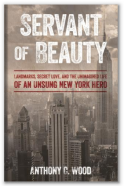Notes from the Board
Michael Ryan

Michael Ryan | Courtesy of Michael Ryan
Although I began my professional life fresh with a Ph.D. in Early Modern European History (1500-1800), I somehow wound up managing rare book and manuscript libraries in universities for the next 40 some years. I had no aspirations to work in a library, other than to read books. It would not have occurred to me to become a librarian. But it was a fortunate transition, since it rescued me from life as a solitary drudge laboring mightily to produce an ounce of genuine scholarship. And it opened so many doors for me, doors to the broader world of universities, higher education, book collecting, philanthropy, and, book and paper conservation, among others. I have bounced around the country, from New York to Chicago to Palo Alto to Philadelphia and now back to New York. It has been, in the words of the late Gardner Botsford, a New Yorker contributor from an earlier time and master of the mot juste, a life of privilege, mostly.
Having been born and raised in Los Angeles, I was unfamiliar with architectural conservation. LA was then (and I guess still is) all about building – building on anything that had room to accommodate a structure. Penn Station fell during my junior year in high school. I knew nothing about it, and if I had, I probably would not have cared. Teenage males have other preoccupations.
Conservation, however, did mean (and still does) something important to me: the conservation of nature. e relentless destruction of the natural beauty of Southern California was a wrenching experience to watch. The proliferation of drab, cheap sub-divisions across the alluvial basin that is LA County remains heartbreaking in memory, whence sprang a lifelong distrust of developers. New York had Penn Station; LA had almost 5,000 sq. miles to despoil. Thee developers did their work well, leaving few stones unturned.
My introduction to historic preservation came at Columbia where I was asked to run the Avery Architectural Library pending the appointment of a permanent director. At Avery, I had the good fortune of meeting Andrew Dolkart who was the faculty face of preservation and neighborhood integrity at Columbia. Through Andrew I learned to appreciate the manifold pleasures of vernacular architecture around the boroughs. Who knew! Thank you, Andrew.
My next awakening came over lunch with someone I had never met but was encouraged to engage with, Tony Wood. At the New-York Historical Society, I realized that we had a key role to play in acquiring and preserving the documentary legacies of the preservation community. It would be part of our contribution to documenting the built environment of New York. Since we already had a rich corpus of Gilded Age architectural firms whose works were now “objects of interest” (by the good guys and the bad guys), it made sense for us to be more aggressive in acquiring the papers and records of people and organizations which had planted their flags.
It is a privilege and honor for me to work with colleagues at The New York Preservation Archive Project to further the goals and mission of the organization in preserving the work of those who have labored most to secure the future of New York’s buildings and neighborhoods. As a librarian, I will do what I can to ensure that the legacies of individuals and organizations committed to saving our built environment from mindless despoilation are preserved and made accessible for use.
Michael Ryan is the Vice President and Sue Ann Weinberg Director of the Patricia D. Klingenstein Library at the New-York Historical Society. He joined the Archive Project board this year.


